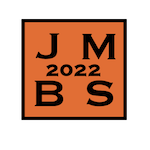The lung is a complex system that serves as an exchange interface between ambient air and blood. Its main function is to enrich the blood with oxygen and deplete the blood with carbon dioxide. During inspiration, fresh ambient air, rich in oxygen and poor in carbon dioxide, is brought to the area of exchange with the blood, the acinus, through the bronchial tree allowing oxygen transfers to blood possible. However, when the lung is subject to an infection, the inflammation of the tissue affects the size of the airways, the air flows distribution in the airway tree, and, consequently, the oxygen transfers to blood. In this talk, we will focus on the mathematical modeling of the transport of respiratory gases in the lung as well as the mathematical modeling of the spread of lung infection, the inflammation and the immune system response. We will then be able to observe the different consequences that the inflammation can have on the oxygen transfer to blood.

 PDF version
PDF version
